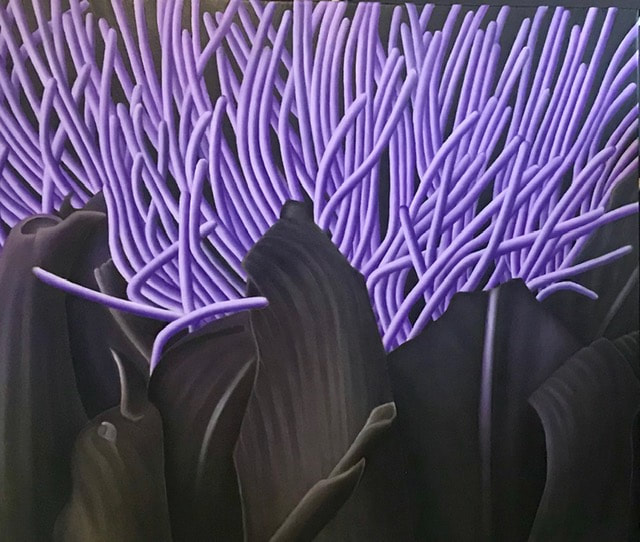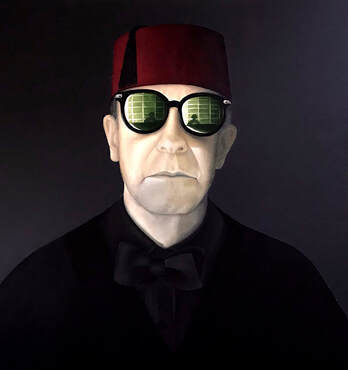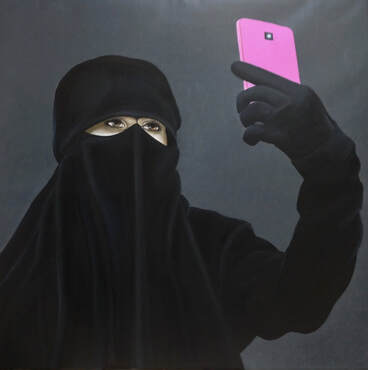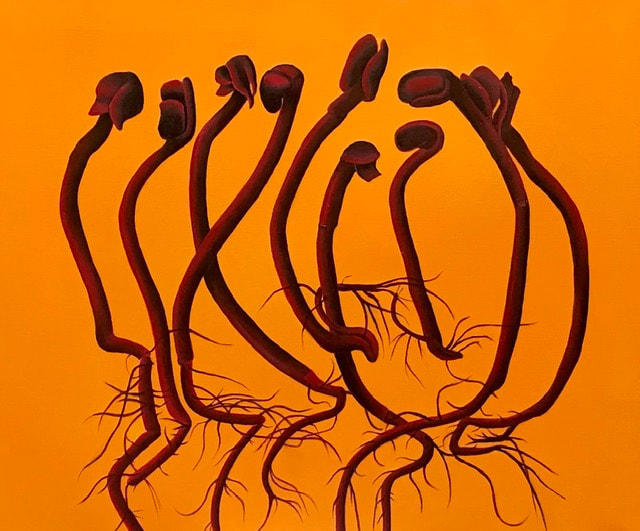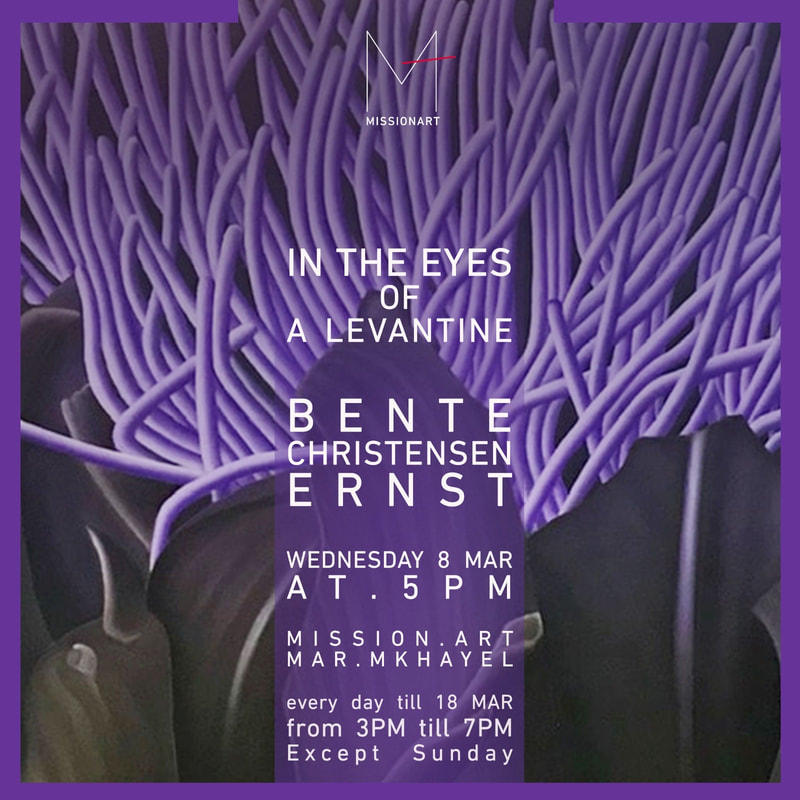Christensen-Ernst realizes the ecology of culture with the recyclist 'visual peels of vegetables and fruits' she applies to her canvas |
In between the moment (an) and the black (kara)
an article written by Evrim Altug
What you are about to read is an attempt to translate the writings of artist Bente Christensen-Ernst, who exhibited her works at Gallery Siyah Beyaz, Ankara in 2021, is using colors and forms through the filter of her experience and memory along with her imagination. From this point of view, these wild-paintings, each of whose names are faithfully attached to the other images in which they reside in the exhibition space -ironically in the dialectical home of Siyah Beyaz, are both internal and external at the same time by themselves. 'Kara'(black), which liberates the ground of the non-repeatable and common 'An'(moment)that brings almost all of them together, leads them to the assurance of 'sameness'. However,on the other hand, these subjects and objects that we view,become both objects and subjects at the same time, as they eye each other in the gallery, just like their viewers. While they are becoming both names and objects, they also become instruments and meansfor brand new names and situations in the eyes of the viewers. They tell us this audio text they produce, which isin a way the libretto of this performance, on the contrary, as we get quieter.
The portraits of women, men and children that Ernst dedicates to us, the organic and inorganic things that have gained a natural or increasingly abstract character, derive their freedom of expression from the blunt silence and size of the image before the viewer. The various and unique reading possibilities created by the viewer's courage to dedicate themselves to the image and the time they spare for these memories that they encounter' for the first time but all the time',determine the essence of the paintings of Ernst. This resembles to the seeds, the fruits of which we eat -or on the contrary-an organic consistency, or the new fruits-seeds that we unconsciously give to a language we word by word feed on.
This patient interest that we have in each of her paintings, especially in an era during which the life of the image has become so short, electronic and emptied, also becomes the mainsource of energy for the world, which the artist, who encourages us to re-read and write somethings with a pedagogical sensitivity,is again trying to understand and tell along with us. In this respect, Bente Christensen-Ernst almost realizes the ecology of culture with these recyclist' visual peels and vegetables and fruits' on her canvas, which she plows like a field. She does this with a global humanism that is not bound to borders like Copenhagen, Istanbul or Antakya, and a likeable social distance that she has already employed long before the pandemic. She does this only in order not to contradict the nature of nature.
At the expense of repetition,the isolation in which the images in Christensen-Ernst's painting are contained,also becomes the supplier of the independence for those images. Upcoming shows: This article about Bente Christensen Ernst is part of the ARTICULATE PROMOTE PROGRAMME.
|
SUPPORTARTICULATE
www.articulate.nu SUPPORT Monday - Friday 8:00 - 16:00 [email protected] +45 30 48 19 81 Head Quarters VAT DK40953191 |
|

